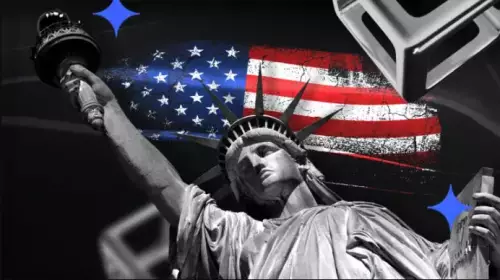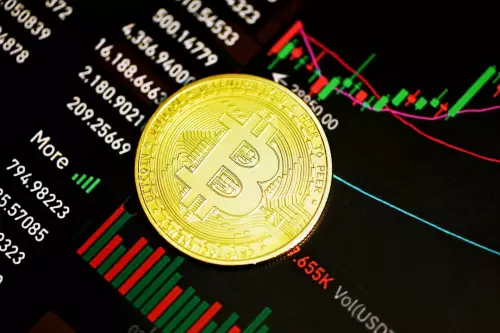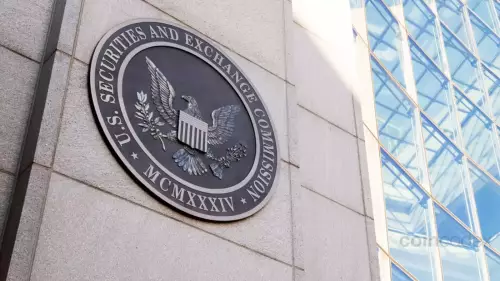 |
|
 |
|
 |
|
 |
|
 |
|
 |
|
 |
|
 |
|
 |
|
 |
|
 |
|
 |
|
 |
|
 |
|
 |
|
Cryptocurrency News Articles
Swift, Consensys, and Blockchain Settlement: A New Era for Global Finance?
Sep 30, 2025 at 07:06 am
Swift partners with Consensys to explore blockchain settlement, aiming for faster, transparent cross-border payments. Is this the future of global finance?

Hold on to your hats, folks! The financial world is buzzing about Swift's latest move: diving headfirst into blockchain settlement with Consensys. This isn't just a toe-dip; it's a full-on cannonball into the digital currency pool.
Swift's Blockchain Leap: Why Now?
For years, Swift has been the go-to for international payments, connecting over 11,500 financial institutions across the globe. But let's face it, the current system can be slower than a snail in molasses. That's where blockchain comes in, promising to speed things up and make cross-border transactions available 24/7.
Swift's CEO, Javier Pérez-Tasso, said it best: they're building the "infrastructure stack of the future." By combining messaging and settlement into one blockchain-based process, banks can track payments in real time while cutting costs. Considering Swift handles the equivalent of the world's entire GDP every three days, even small improvements could have a huge impact.
Consensys and Ethereum: The Dynamic Duo
Swift didn't just pick any blockchain; they chose Ethereum, tapping Consensys, the masterminds behind MetaMask, to build the conceptual prototype. Word on the street is they might even be using Linea, an Ethereum Layer 2 network that leverages zero-knowledge proofs. This is some serious wizardry. Banks can test blockchain features without exposing sensitive customer data, keeping everything secure and compliant.
Linea, Ripple, or Hedera? The Contenders
The big question is, which blockchain will ultimately win Swift's favor? Ripple (XRP) and Hedera (HBAR) have been in the conversation, but Linea's Ethereum-based approach is gaining traction. While Ripple boasts impressive transaction speeds and HBAR offers scalability, Linea's zero-knowledge roll-up technology presents a compelling case for privacy and efficiency.
Beyond the Hype: Challenges and Opportunities
Of course, this blockchain adventure isn't without its challenges. Banks face integration costs, operational risks, and regulatory hurdles. Settlement is a legal process, not just a technical one, so blockchain confirmations need to align with legal finality rules. However, if successful, this partnership could enable banks to move regulated digital assets at scale while maintaining compliance and security.
My Two Satoshis
While Swift's move is undoubtedly exciting, let's not get ahead of ourselves. Integrating blockchain into the existing financial infrastructure is a marathon, not a sprint. But the fact that Swift is embracing this technology signals a major shift in how global finance could operate. It's a middle ground between traditional finance and digital innovation, offering banks the speed and transparency of blockchain without abandoning their trusted systems.
The Road Ahead
So, what's next? Consensys will develop the prototype, and Swift will define future work phases. They're even exploring tokens for bank settlement, which could transform Swift into a platform that handles actual value transfer. It's an ambitious project, but with the right approach, it could revolutionize the way we move money around the world.
The financial world is evolving, and Swift's blockchain partnership is a clear sign of the times. Whether you're a seasoned crypto enthusiast or a curious bystander, this is one story you'll want to keep an eye on. Who knows, maybe one day we'll all be settling international payments with the tap of a button. How's that for a world of swift finance?
Disclaimer:info@kdj.com
The information provided is not trading advice. kdj.com does not assume any responsibility for any investments made based on the information provided in this article. Cryptocurrencies are highly volatile and it is highly recommended that you invest with caution after thorough research!
If you believe that the content used on this website infringes your copyright, please contact us immediately (info@kdj.com) and we will delete it promptly.






























































